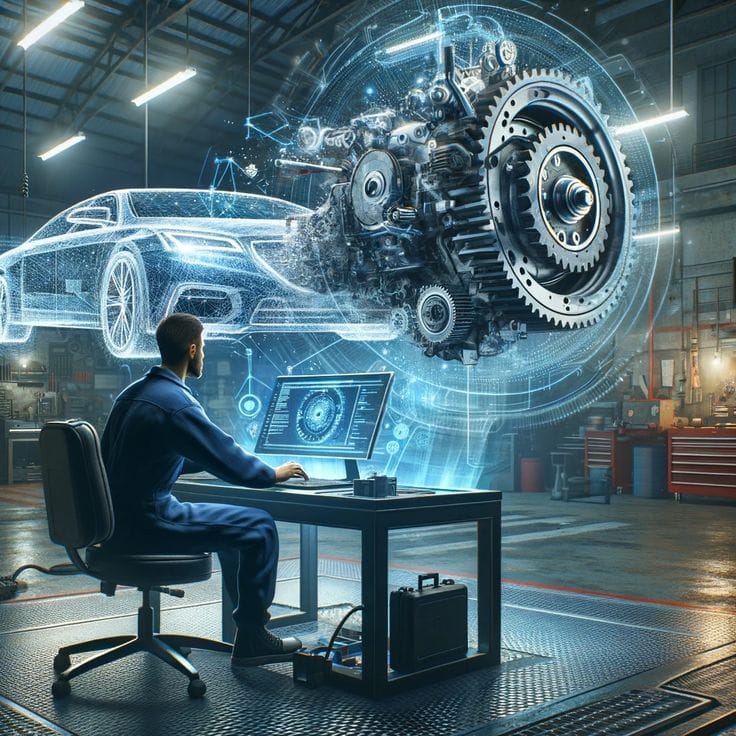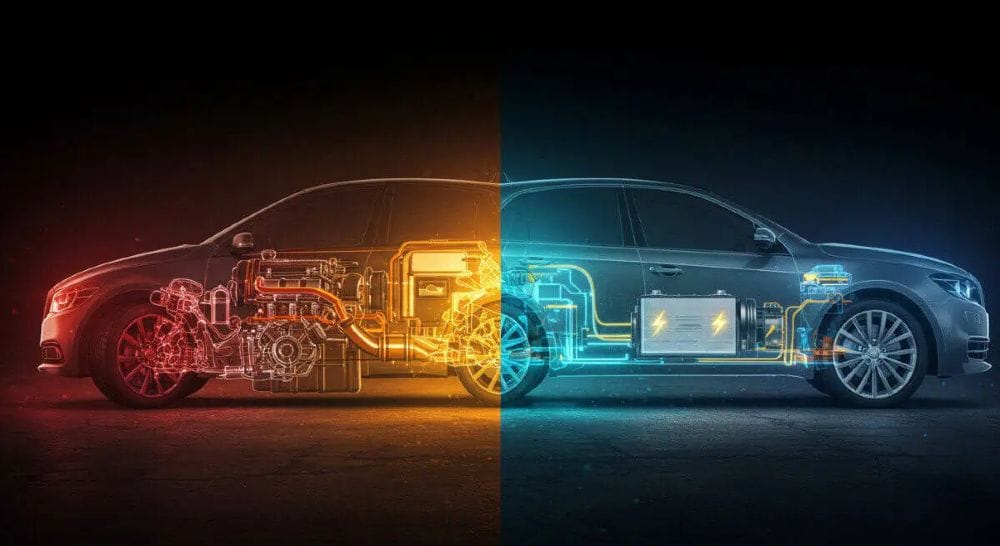Have you ever wondered how an electric vehicle transmission actually works? Unlike traditional cars, EVs don’t rely on complex gearboxes or multi-speed systems. Instead, they use clever engineering and electric motors to deliver instant torque with minimal parts. This guide breaks down the simplicity and power of EV transmissions, revealing how one gear can drive a revolution in automotive design. Whether you’re curious about Tesla, hybrid electric vehicles, or the future of EV technology, you’re in the right place.
Understanding EV Transmissions
Understanding EV transmissions is key to appreciating how electric vehicles manage power delivery differently from traditional cars. The transmission system in an electric vehicle connects the electric motor to the wheels, ensuring efficient power transfer. This system plays a vital role in performance and efficiency, enabling electric vehicles to accelerate smoothly and maintain energy use at optimal levels. Unlike conventional cars, electric vehicles simplify power management by leveraging the unique characteristics of electric motors.
What Is an EV Transmission?
An EV transmission refers to the mechanism that transfers power generated by the electric motor to the car’s wheels. Typically, this involves a single-speed transmission designed to optimize the electric motor’s wide rpm range and high torque delivery. This simplified setup reduces mechanical complexity compared to traditional gearboxes found in combustion engine vehicles, improving reliability and reducing maintenance.
Do Electric Vehicles Have Transmissions?
Yes, electric cars have transmissions, but these differ fundamentally from the multi-speed systems in internal combustion engine (ICE) vehicles. Most battery electric vehicles (BEVs) employ a single-speed transmission, allowing the motor to deliver consistent torque across a wide speed range. This contrasts with ICE vehicles that require multiple gears to match engine power to speed, which means EVs benefit from simpler transmission systems.
Did you know most EVs like Tesla use a single-speed transmission to simplify performance and reduce maintenance?
Differences Between EV and ICE Vehicle Transmissions
The key difference is in complexity and operation. ICE vehicles use complex manual or automatic transmissions with multiple gear ratios to adapt engine power for acceleration and cruising. Conversely, EVs often use one-gear transmission systems because their motors can provide instant torque and maintain efficiency across speeds. This eliminates gear shifting and reduces energy loss, making EVs more efficient in power delivery.
How Electric Vehicle Transmissions Work

EV transmissions operate by efficiently channeling electric motor power to the wheels with minimal energy loss. They are engineered to exploit electric motors’ unique torque characteristics, leading to smooth and responsive driving experiences.
Basic Transmission System in an Electric Car
Most electric cars utilize a single-speed transmission that connects the motor to the wheels through a fixed gear ratio. This setup avoids the need for shifting gears and mechanical complexity. The electric motor produces a wide torque band, allowing the car to accelerate from zero to top speed smoothly, improving overall driving efficiency.
Read also about Sodium-ion Battery Technology
The Role of Gear in EV Performance
Although many EVs use a single gear, the chosen gear ratio critically affects acceleration and top speed. Proper gearing allows the electric motor to operate in its most efficient range, maximizing torque output and energy efficiency. This balance between acceleration and cruising speed is essential for high performance and energy conservation.
Why Most EVs Use One-Gear Transmission
The reason most EVs rely on a one-gear transmission is due to the electric motor’s ability to generate instant and sustained torque over a broad rpm range. This makes multiple gears unnecessary, simplifying the drivetrain while enhancing reliability and lowering maintenance needs compared to traditional multi-gear systems.
Comparing EV and Traditional Transmissions
A direct comparison reveals why EV transmissions differ significantly from traditional systems, reflecting the fundamental change in propulsion technology.
Electric Car Transmission vs Traditional Transmission
Traditional automotive transmissions involve multiple gears to optimize the engine’s power output, matching torque and speed for efficiency. EV transmissions generally use a single-speed setup, directly connecting the motor to the wheels. This eliminates gear shifting and mechanical losses, resulting in smoother and more efficient power delivery.
Gearbox Needs in EVs vs ICE Vehicles
ICE vehicles rely on multi-speed gearboxes to keep the combustion engine within its optimal power band. EVs, however, require less complex gearboxes because their electric motors provide consistent torque at varying speeds. This simplifies the transmission type used in electric vehicles and reduces weight and complexity.
Did you know Porsche Taycan uses a two-speed gearbox to boost acceleration and top speed?
Transmission Types in Hybrid Electric Vehicles
Hybrid electric vehicles (HEVs) combine electric motors with combustion engines, often using multi-speed or continuously variable transmissions (CVT) to balance power sources. This adds complexity not found in pure electric cars but allows hybrids to optimize fuel economy and performance by switching between or combining propulsion modes.
Innovations in EV Transmission Systems

Technological progress continues to evolve EV transmissions, aiming to improve performance, efficiency, and adaptability to different driving needs.
Advancements in Electric Vehicle Transmission Technology
Recent innovations focus on developing multi-speed transmissions and smarter control systems for electric vehicles. These technologies enhance acceleration, increase top speed, and optimize power delivery by adjusting gear ratios dynamically, which benefits both everyday EVs and high-performance models like electric sports cars.
Multi-Gear EV Transmissions: Are They Necessary?
While most EVs perform well with single-speed transmissions, some automakers explore multi-speed transmissions to extend the speed range and improve efficiency at higher speeds. This is particularly true for performance-oriented EVs, where multiple gears allow better acceleration and higher top speeds.
The Rise of Smart EV Transmission Systems
Smart transmissions integrate sensors and AI-based controls to manage gear shifting and torque delivery in real time. These systems improve energy efficiency, driver comfort, and vehicle responsiveness. By optimizing power flow between the electric motor and wheels, smart transmissions represent the next step in EV technology.
Read about Apple Vision Pro Review
The Future of Electric Car Transmissions
Looking forward, EV transmissions will continue evolving to meet the demands of efficiency, performance, and driving experience.
Future of Electric Vehicle Transmission Design
Future designs will focus on reducing weight, improving compactness, and integrating with advanced electric powertrains and battery technologies. Innovations will likely bring more versatile transmission systems that can handle higher power outputs while maintaining efficiency.
Did you know the global EV transmission market is expected to grow rapidly as more automakers shift to electric?
Will the Future of Electric Cars Include Gears?
While many electric vehicles will continue to use single-speed transmissions due to their simplicity, some future electric cars, especially in the sports and luxury segments, might adopt two-speed transmissions or other multi-gear systems to boost performance and efficiency.
Trends Shaping EV Transmission Systems Ahead
Emerging trends include AI-driven transmission control, integration with vehicle software for better energy management, and advanced materials to reduce weight. These developments will help EV manufacturers meet increasing consumer expectations and regulatory demands for sustainable, high-performance electric vehicles.
Frequently Asked Questions about Electric Vehicle Transmission
Do EVs need traditional transmissions?
No, EVs don’t need traditional transmissions. Most electric vehicles use a single-speed transmission, unlike internal combustion cars. Their electric motors deliver instant torque, so they don’t require a gearbox or multiple gear ratios like in an ICE vehicle.
Does Tesla have a transmission?
Yes, Tesla cars have a transmission system, but it’s a one-gear transmission. Tesla uses electric powertrains with single-speed transmissions, which optimize efficiency and reduce mechanical complexity compared to traditional transmission systems.
Do electric cars have transmission fluid?
Some electric cars use specific lubricants for their gear systems, but they don’t need transmission fluid like in a manual transmission or automatic transmission. The simplified drivetrain in EVs reduces maintenance and eliminates traditional transmission fluid needs.
How do electric cars shift gears?
Most electric vehicles don’t shift gears. Their electric motors operate efficiently across a wide RPM range using a single gear. Advanced models, like Porsche sports EVs, may use a two-speed transmission to improve acceleration and top speed, but many electric vehicles use one gear only.
As you’ve seen, the electric vehicle transmission is not only efficient but also surprisingly simple. From single-speed systems to advanced multi-gear setups, EVs are changing how we think about motion. What do you think—will future electric cars stick to one gear or shift into new possibilities? Let us know what transmission tech excites you most!
Read also Data Protection